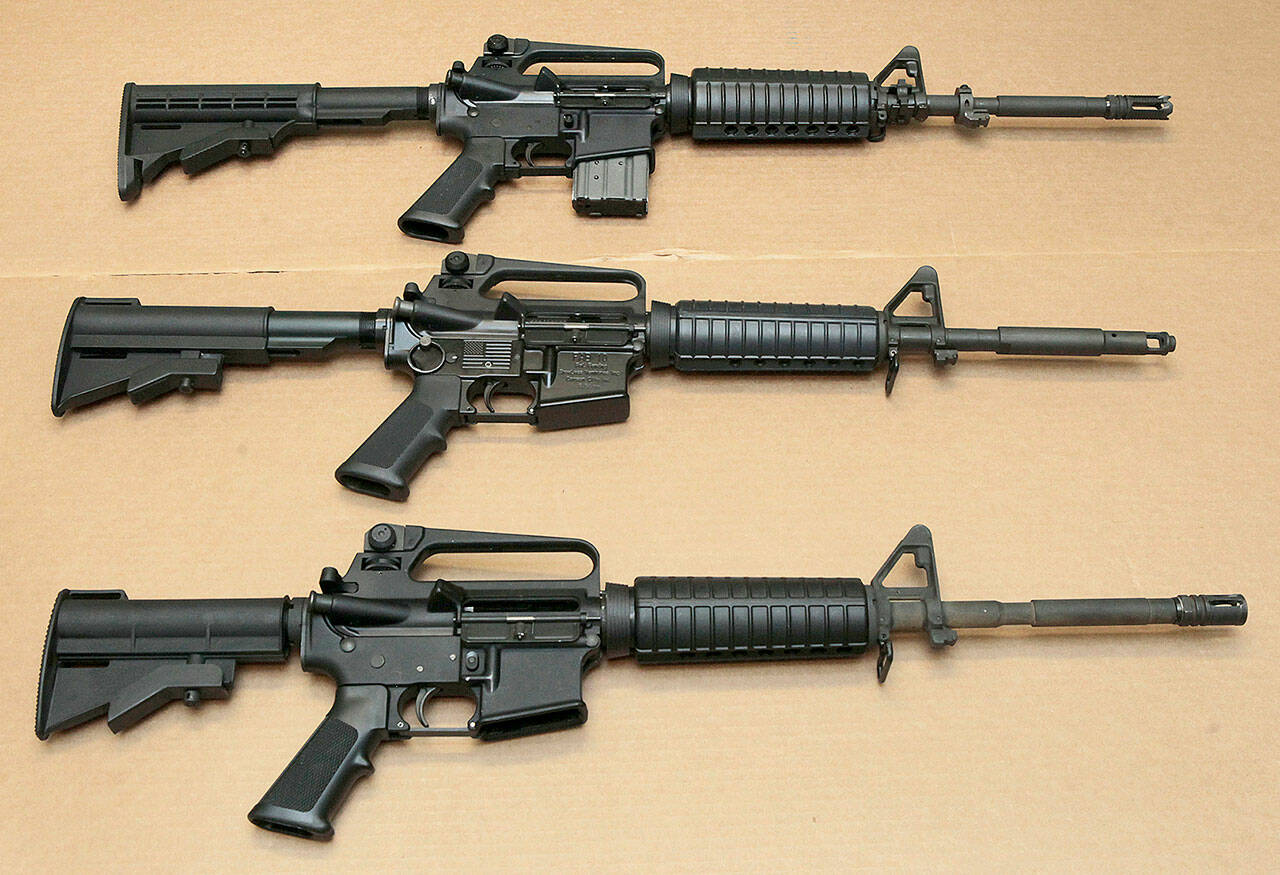By The Herald Editorial Board
After seven years of legislative attempts and considerable debate, a proposal to bar the manufacture, sale and distribution of “assault weapons” — specifically 61 models of semiautomatic rifles and pistols, including the AR-15 — appears closer to law.
Its passage — as well as the passage of current companion legislation joining earlier adopted firearms safety measures — holds promise to reduce the risks and the occurrence of gun violence, suicide by firearm and mass public shootings, whose increasing frequency now threatens to test the endurance of our compassion.
As of Monday, when a shooter killed three 9-year-old children and three adults at a private elementary school in Nashville, Tenn., 130 mass shootings have been recorded in the first three months of the year. In March alone, 157 people have died in 38 mass shootings, with 133 injured, according to Axios.
The 28-year-old Nashville assailant, who had been receiving treatment for an “emotional disorder,” over the course of a few years was still able to purchase seven firearms from five stores and used three of the firearms — including an AR-15 semiautomatic rifle — in the massacre.
Tennessee, unlike Washington state, does not have a “red flag” law that allows for the confiscation of firearms from those deemed to be a threat to themselves and others. Nor does that state bar the sale of large-capacity ammunition magazines, as Washington state does.
Washington’s past successes with firearm safety measures, however, should not keep it from adding to the protections possible here.
For the first time in seven years, the Washington state legislation, House Bill 1240, which passed the House earlier this month, has now been advanced by a Senate committee and is expected to get a vote on the Senate floor within two weeks, The Herald’s Jerry Cornfield reported Tuesday. After adoption by the full Legislature, Gov. Jay Inslee, who with Attorney General Bob Ferguson requested the legislation, is expected to sign it into law.
The legislation does not seek to bar possession of the listed weapons from those who already own them, and exceptions are made for law enforcement and the military.
Like last year’s successful ban on high-capacity magazines, which limits sales to ammunition magazines of 10 rounds or fewer, the ban on assault-style or military-style weapons recognizes these firearms for what they are and why they can constitutionally be excluded from legal sale: The purpose of such firearms — designed to replicate the destructive power of weapons meant for the battlefield — is more about amusement in firing them than for their utility in hunting or even in protection of home and lives.
The AR-15, modeled after the military’s M16, is now the best-selling rifle in the United States. A Washington Post story reports that about 16 million Americans — 1 in 20 — own at least one AR-15. The “gun of choice” for many mass killers, the AR-15 has been used in 10 of the 17 deadliest mass shootings in the U.S. since 2012.
Unlike more conventional firearms, the ammunition used in the AR-15 and other semiautomatic firearms fire bullets at such high velocity that the projectile doesn’t just pierce the body but deforms in the body and creates a shock wave that can blow apart a skull as it exits, demolish vital organs and cause unstoppable bleeding, a graphic and sobering online report from the Post shows.
As important as the assault weapons ban will be adoption of House Bill 1143, which would add a 10-day waiting period to the currently required background check. The person seeking to purchase a firearm also would have to show proof of completion of a firearms safety course.
Paired with a ban on assault weapons, a waiting period during the background check and requirement of a firearms safety course will slow the process of acquiring firearms, allowing more time to head off the sale or transfer of firearms to those who should not have them in their possession, while still protecting the rights of responsible gun owners.
Tragically, there is at least one local example of how a waiting period, gun safety training and a ban on assault-style weapons might have prevented a massacre: the 19-year-old who bought an assault weapon four days before the shooting deaths of three young adults in Mukilteo in 2016.
Republicans, including law and justice committee member Sen. Keith Wagoner, R-Sedro-Woolley, objected to the assault weapon ban and advocated instead for an approach that aims to curb lawlessness and assures access to mental health services. Those broader solutions are warranted.
“It’s not the instrument,” Wagoner said, referring to firearms. “It’s the person using the instrument.”
Wagoner is correct; in part. But too much of the problem is the easy availability of weapons to those who — because of mental instability or an inability to manage anger — pose a threat to others and even themselves with those instrument in their hands.
What is being sought are laws that limit access to firearms — especially the most deadly and destructive weapons — and provide ample time to check backgrounds and better assure firearms’ safe use to keep them out of the hands of those who should not have access to them.
At least until better delivery of mental health services is assured, especially for adolescents and young adults, those laws are of immediate necessity.
Talk to us
> Give us your news tips.
> Send us a letter to the editor.
> More Herald contact information.

























